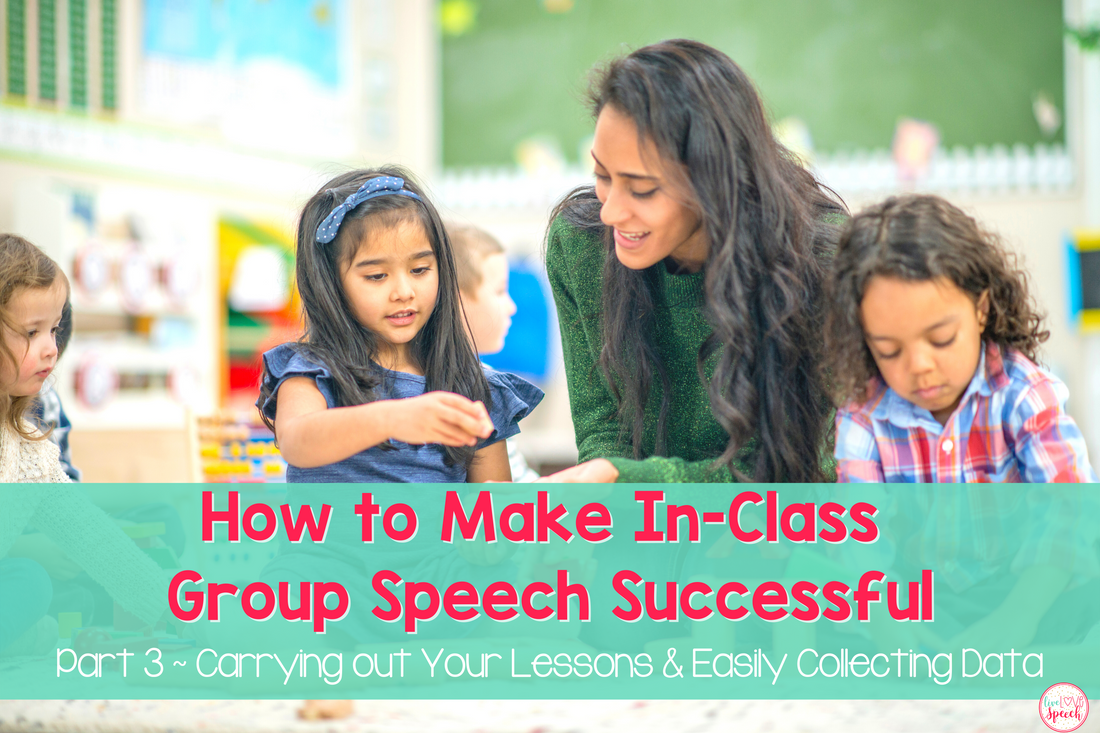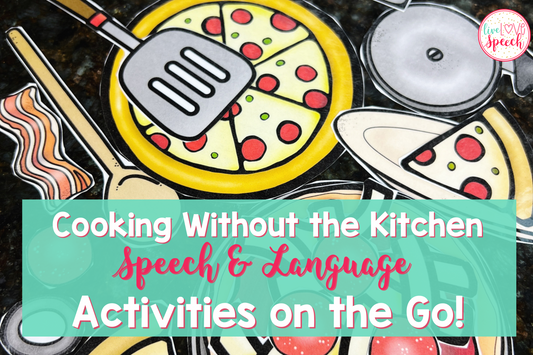Welcome to PART 3 of my blog series: How to Make In-Class Group Speech Successful! In the last two parts I talked about lesson planning, using visuals, making a to-do list, setting expectations, and more! If you missed Parts 1, 2, or 3 be sure to head over and check them out!

NOW LET’S GET TO PART 3: CARRYING OUT YOUR LESSONS AND EASILY COLLECTING DATA….
You have done all the prep and planning and now it’s time to walk into the classroom and get started on your super fun activity for group speech. My first tip is to introduce the activity (what you will be doing) in the simplest but most exciting way possible (after all, you have done a lot of work to get this activity ready so why not get your students PUMPED!). It’s also a nice idea to have a visual of what you will be doing. For example, if I am making Blender Applesauce with my students, I like to introduce it by showing them a picture of the finished product (which you can easily get from google, Pinterest, or make your own). Depending on the grade level you work with, you may want to take this a step further and briefly explain the goals/objectives your lesson will be covering. Again, if you are creating a little visual poster of your activity, just add the goals/objectives in bullet form to the bottom.
I’ve said it before but I am SUPER excited that all of my group lessons for the school year are already planned using my Visual Cooking & Craft Recipe Pack. Whether you are doing a hands on activity or not, here are some more TIPS to carrying out those lessons.
1. Incorporate vocabulary by going over each material, tool, ingredient you will be using. You can do this receptively and expressively!
2. Assign each student a “job” so they can really be involved in the lesson and not just “watching”. This can be as simple as measuring an ingredient, taking a turn mixing, crushing cookies, etc.
3. Target those adjectives/attributes! Ask your students, “What ingredient is sticky?” “GLUE!”.
4. If needed, explain the order you will be going in in terms of what student will go first, second, etc. (this will hopefully eliminate those comments like, “No fair, he got to go first!”
5. Go step-by-step when carrying out your activity. This goes back to your “planning”. If you don’t have the steps either written down or in your head ahead of time, things can get a little crazy.
6. Once your activity is complete, try doing a little review by asking questions…”What did we make today?” “Did we eat it?” “What did it feel like?” “Did you have fun?!”
Check out the images below from my Recipe Pack to see how I present and work on some of the tips I shared!




Here are some samples of Group Data Collection Sheets I use for my cooking/craft in-class lessons.

The best TIPS I can share for Data Collection are…
1. Do not go crazy if you can’t collect data for each and every group session.
2. This goes back to Part 1 of this Blog Series, rely on your amazing teachers and/or paras to quickly jot down those memorable moments and achievements (anecdotal data!).
3. Be informal! Keep a notepad or sticky notes near by to simply write down data on ONE of your main goals. It’s ok to just choose ONE goal or objective as your focus for data collection. For example, if receptively identifying actions is your goal, then only worry about tracking data for that goal during your session. The next week or whenever your next group lesson is, choose a different goal and do the same.
4. Create your own group data sheet with columns to add your students names and data collection/comments. Save this to your computer that way you can easily edit it as needed.
That’s a wrap for Part 3 of this blog series! I would love to hear your thoughts on how you carry out your lessons and do group data collection. Be sure to check out the FINAL post of this series coming soon…PART 4: Follow up, carryover, and reflection. Thanks friends for your continued support!! xo








